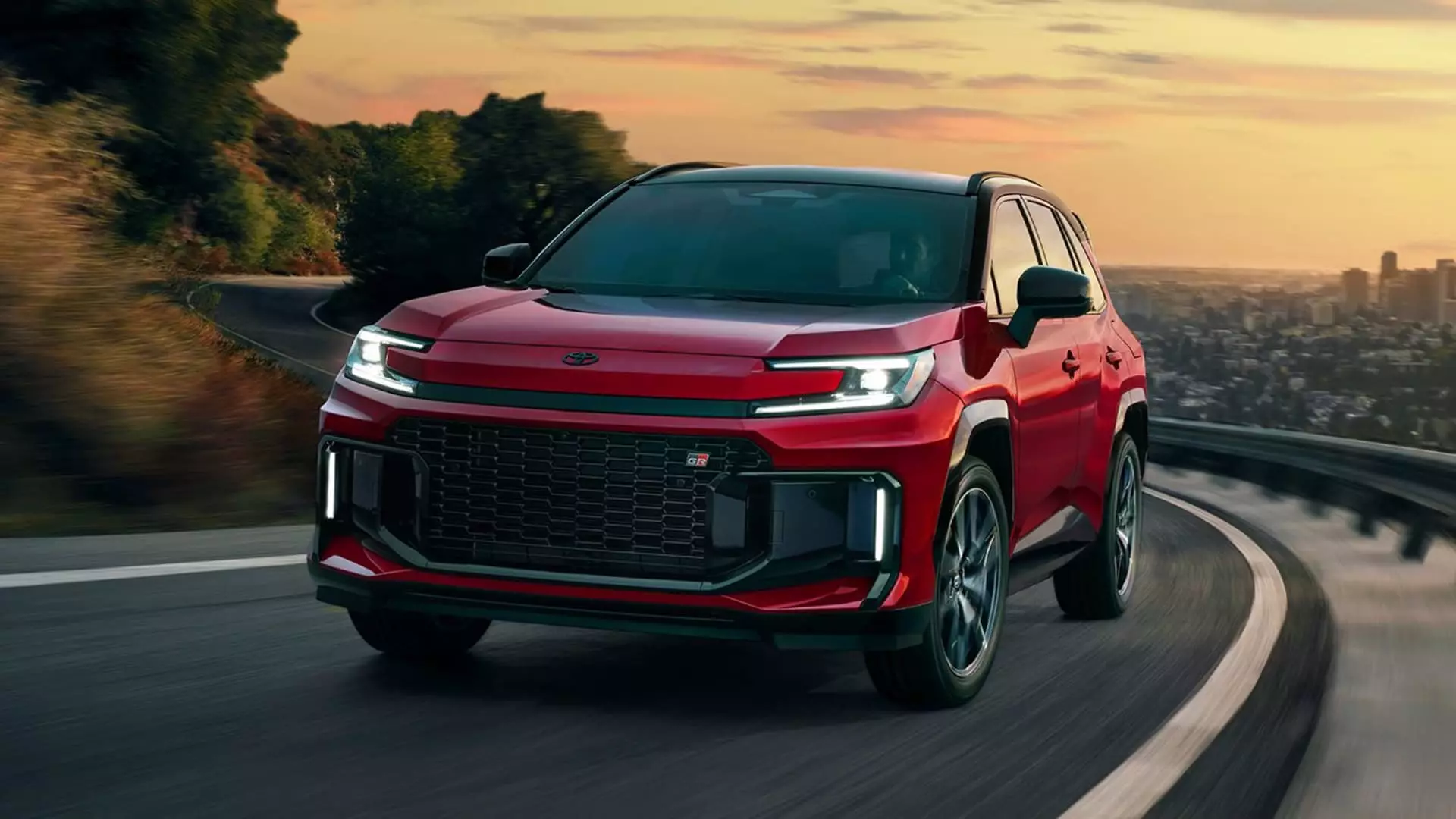In a groundbreaking decision that could redefine the automotive industry, Toyota has announced that the iconic RAV4 will exclusively adopt hybrid and plug-in hybrid models starting in 2026. This move not only signifies a shift in Toyota’s strategy but stands as a telling response to the clamor for environmentally conscious yet pragmatic vehicle options. As the climate crisis intensifies and fuel economy regulations tighten, hybrid models seem to offer a feasible middle ground between traditional combustion engines and fully electric vehicles. Yet, is this bold decision a genuine commitment to sustainability, or merely a corporate response to market trends?
Toyota’s timing is critical; while all-electric vehicles are on the rise, their uptake has been slower than many anticipated. The current market and consumer sentiments reflect a transitional phase wherein hybrids appear more appealing due to their flexibility and performance. By offering the RAV4 solely as a hybrid model, Toyota is not just responding to customer demand but seems to also be positioning itself strategically in an increasingly competitive environment—one where consumer habits are continuously evolving.
The Popularity of the RAV4: An Incentive for Change
The RAV4 has consistently ranked as one of the best-selling SUVs in the United States, with sales increasing by 9.3% last year. Toyota’s decision to go hybrid-only is strategically sound. It aligns well with market data, where hybrids and plug-in hybrids have surged in popularity, accounting for nearly half of RAV4 sales last year. As David Christ, the head of Toyota North America, indicated, the consumer “vote” is heavily leaning towards hybrids—evidence that brands must be agile and willing to pivot according to consumer preferences.
However, one must question the long-term implications of this hybrid-only strategy. While the current consumer demand is robust, will it sustain over time against the backdrop of an ongoing push for full electrification? Critics argue that a hybrid-only offering risks alienating potential customers craving full electric solutions. The market dynamics are unpredictable, fluctuating as consumers become more environmentally conscious and technologically advanced.
Challenges Ahead: Tariffs and Supply Chain Woes
Toyota is not only navigating consumer preferences but also contending with significant challenges posed by international tariffs. With current tariffs on vehicles imported into the U.S. hovering at 25%, the economic ramifications can’t be ignored. While the RAV4 enjoys popularity, a good portion of these vehicles is produced outside of the U.S., complicating the supply chain and increasing costs. President Trump’s tariffs represent substantial risks that could hinder Toyota’s ambitious plans to ramp up production, especially as it aims to manufacture more RAV4s domestically in Kentucky.
Mark Templin, Chief Operating Officer of Toyota Motor North America, pointed out the necessity of flexibility in adjusting production strategies amid uncertain trade negotiations. In an era where uncertainty is rampant, can Toyota genuinely control its destiny? Or will external factors dictate the viability of their hybrid strategy? A successful automotive manufacturer must master logistics and adaptability, but the tangled webs of tariffs and trade present a looming threat, highlighting the tenuous nature of their operational framework.
Electric vs. Hybrid: A Future Uncertain
The current strategy puts Toyota in an interesting position, strategically favoring hybrids over purely electric vehicles. Despite hybrids’ effectiveness in reducing emissions and improving fuel economy, there is an undeniable trend toward full electric solutions. Automakers across the globe are increasingly prioritizing pure EVs, pledging to shift entirely away from fossil fuels. Would Toyota’s initiative to restrict the RAV4 lineup to hybrids ultimately backfire amid a broader push towards all-electric alternatives?
Further complicating matters, while hybrids perform admirably, they may not be the ultimate solution to climate challenges. Critics argue that simply slapping hybrid technology onto conventional vehicles is akin to placing a Band-Aid on a much larger environmental issue. The world needs significant leaps in innovation, transitioning toward sustainable energy sources unbound by even hybrid combustion engines. In this context, can Toyota truly position itself as a leader in environmental responsibility by essentially playing it safe?
As automakers grapple with rapid changes and consumer expectations, Toyota’s hybrid-only RAV4 approach embodies the industry’s transitional phase towards greener energy. Balancing the intricacies of supply chains, fluctuating tariffs, and consumer demands presents a complex web that could shape the future of the automotive landscape. The dedication to a hybrid model, while laudable, raises questions about the ultimate trajectory of sustainability and innovation within the industry. As discussions around clean energy intensify, will the hybrid RAV4 be seen as a bold pioneer or merely a stepping stone? Only time will tell.

